3D-printing Frankenstein: critical making in the digital media classroom
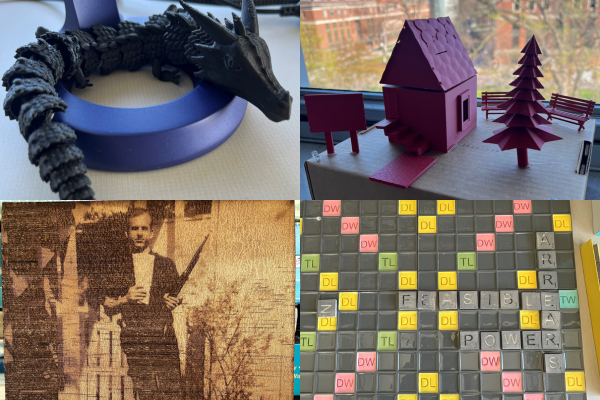
“Everything is Frankenstein,” Senior Lecturer Calvin Olsen exclaims. “Everything is made of smaller parts that are pieced together that somehow work and eventually do something.”
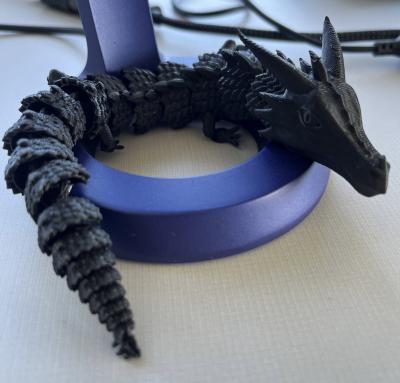
Mary Shelley’s novel has been a leading influence in Olsen’s approach to teaching English 4569: Digital Media & English Studies, which examines the intersection of English studies and the emergent technologies that are used to acquire and create knowledge in the discipline. Olsen’s main goal for the course, which makes use of 3D-printing services in the Digital Media Project, is to help students understand technology’s relationships both to society and to “the literary” as a concept. These intersections have been a long-time interest for Olsen, guiding his dissertation, The Medium Is the Monster: Frankenstein in[g] Electronic Literature and Digital Humanities.
In the final sentence of his spring 2025 course description, Olsen writes: “Ideally, all of us will get a little taste of what it feels like to bend the boundaries of our discipline and spend a few weeks in the shoes of Victor Frankenstein as the things we make bound off in unexpected directions.” While 3D printing may not be the first medium associated with an English class, students gain the unique experience of not only creating but also becoming a creator. Students engage in digital creation first, then print a physical object, and finally turn the physical object back into a digital object to revise it. Students then go on to justify their creations as literary objects through various theories, such as media theory or philosophies of art.
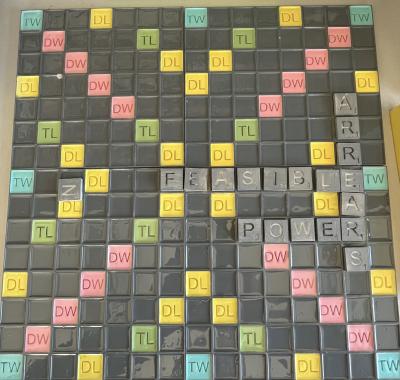
3D printing, Olsen says, is “an emerging technology that nobody really uses in literary studies. It’s cool because you can make a thing; if you want to make a chess board, you can make a chess board.” Learning about 3D printing puts students in a unique position where the creator is as important as the creation, in both creative and legal contexts. This isn’t simply an academic exercise — the question of creation has real-world implications that we can see playing out in society. As Olsen points out, “there are laws restricting ghost guns, which can be 3D-printed, so someone out there is thinking about who is 3D printing.” He wants students to understand that they can stretch the limits of what is considered to literary studies and published work, as well as what it means to be a creator, whether of literature or artifacts.
The course centers “critical making,” a concept developed by Matt Ratto (Faculty of Information, University of Toronto) that describes the connection between critical thinking and conceptual work often practiced in “the literary” and the physical act of creating or making. Joining literary studies and the process of creating physical media, critical making brings technology’s relationship to both individuals and society into focus.
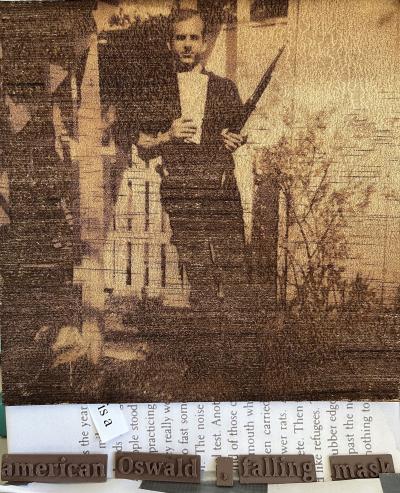
Olsen describes critical making as “the cross between theory and praxis,” and in his course students practice it by centering the process of creating a 3D-printed model rather than the creation itself. He says, “critical making is creating physical objects and allowing yourself to think through the process.” This approach to the process of creation forces students to confront greater implications about the objects they print, as Olsen hopes they consider questions like “what am I making, what are the steps, how does that build knowledge, and how does that give ‘meaning’ it might not otherwise have?”
In focusing on the process of creation, it becomes evident how all the things around us are social objects in some way. Even looking at buildings around campus, Olsen observes that “each one of those bricks got made by someone. They were designed and chosen for their size, weight, or how much they can handle.” These observations aren’t just about creation in the abstract: Olsen also encourages students to consider the effects of what they create, especially since 3D printing involves plastic. “I’ve 3D-printed things that will outlast me by a long time, so that makes me more cognizant of what I create,” he remarks. He encourages students to confront all the ways their objects interact with the world, both as objects of meaning, and as objects made of plastic that aren’t always sustainable.
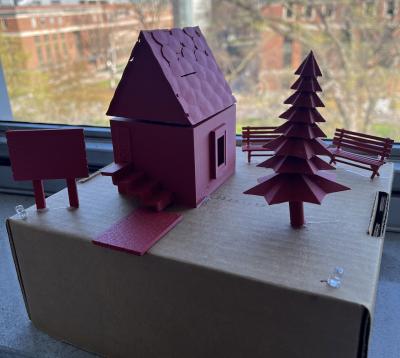
Since 3D printing remains a relatively new technology, Olsen looks forward to seeing the ways his students might someday incorporate their skills into their careers or other creative pursuits. After his first semester of teaching English 4569 in spring of 2024, one of his first students began an internship 3D printing in Ohio State University’s prosthetics lab. “To have someone doing real world application that will help real people at some point is the coolest,” he says. Reflecting on the course, Olsen says he wants the critical making process and hands-on experience with 3D printing to give his students a different way to look at the world. Blurring the lines between what is literary and what isn’t, Olsen hopes students gain unique skills and new perspectives from their semester “in the shoes of Victor Frankenstein.”
